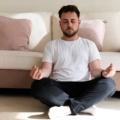Meditation Exercises for Students, Modern students are under constant pressure—academic deadlines, social expectations, and the never-ending scroll of digital distractions. Whether you’re a high school student prepping for finals or a college student managing a full course load and part-time job, stress can take a serious toll on your mental health and academic performance.
Fortunately, meditation offers a powerful, scientifically backed way to reduce anxiety, sharpen concentration, and improve overall well-being. And the best part? It doesn’t require any fancy equipment or hours.
In this article, we’ll explore simple and effective meditation exercises for students, why they work, and how to easily fit them into a busy schedule.
Why Should Students Meditate?
Before diving into specific exercises, let’s understand why meditation is so beneficial for students:
✅ Benefits of Meditation for Students:
-
Improves concentration and memory
-
Reduces stress and anxiety
-
Promotes emotional regulation
-
Increases resilience during exams
-
Enhances sleep quality
-
Boosts creativity and problem-solving skills
Regular meditation trains your brain to focus better and stay calm under pressure—two skills every student needs.
1. Mindful Breathing (2–5 Minutes)
Best For: Quick relaxation, before exams, or in between study sessions.
Mindful breathing is one of the simplest forms of meditation, making it ideal for beginners. It teaches you to stay present by focusing solely on your breath.
How to Do It:
-
Sit comfortably with your back straight.
-
Close your eyes and take a deep breath in through your nose.
-
Exhale slowly through your mouth.
-
Focus all your attention on the sensation of breathing.
-
If your mind wanders (it will), gently bring it back to the breath.
Why It Works:
Deep breathing activates the parasympathetic nervous system, calming your body and reducing stress.
2. Body Scan Meditation (5–10 Minutes)
Best For: Releasing physical tension after long study hours.
The body scan helps bring awareness to different parts of your body, which can relieve stress and promote relaxation, especially helpful after sitting all day.
How to Do It:
-
Lie down or sit in a relaxed position.
-
Close your eyes and begin by noticing your toes.
-
Slowly move your attention up through your legs, hips, back, arms, shoulders, and head.
-
As you focus on each body part, notice any tension and try to release it.
-
Breathe naturally throughout.
Why It Works:
This practice enhances your mind-body connection and can reduce stress-induced muscle tightness.
3. Focused Attention Meditation (5 Minutes)
Best For: Training the mind to concentrate better—especially useful before study sessions.
This meditation hones your ability to focus on one object, thought, or sound, which directly translates into better attention and learning capacity.
How to Do It:
-
Choose a focal point—your breath, a candle flame, or even a single word like “focus.”
-
Sit comfortably and direct all your attention to that one object.
-
If your thoughts wander, gently bring your focus back.
Why It Works:
It rewires your brain to stay on task longer and with more clarity.
4. Walking Meditation (10 Minutes)
Best For: Students who find it hard to sit still or need a break from screen time.
Walking meditation combines movement with mindfulness, making it perfect for active students or anyone who feels restless.
How to Do It:
-
Find a quiet path or hallway.
-
Walk slowly and focus on the movement of each step.
-
Pay attention to how your feet lift and touch the ground.
-
Synchronize your breath with your steps.
-
Avoid distractions like your phone.
Why It Works:
This moving meditation refreshes both the body and mind, helping restore energy and mental clarity.
5. Loving-Kindness Meditation (5–7 Minutes)
Best For: Reducing negative self-talk and fostering compassion—especially during stressful periods.
Students often judge themselves harshly. Loving-kindness meditation helps replace that inner criticism with compassion and empathy.
How to Do It:
-
Sit quietly and bring to mind someone you care about.
-
Silently repeat phrases like:
“May you be happy. May you be healthy. May you be at peace.” -
Gradually include yourself in the practice:
“May I be happy. May I be safe? May I be free from suffering.”
Why It Works:
This practice boosts emotional resilience and can improve relationships, which are key to a balanced student life.
6. Visualization Meditation (5–10 Minutes)
Best For: Building motivation, reducing performance anxiety, and enhancing confidence.
Visualization is popular among athletes and performers, and students can benefit just as much.
How to Do It:
-
Close your eyes and visualize a successful outcome (e.g., acing a test, giving a great presentation).
-
Imagine the sights, sounds, and feelings in as much detail as possible.
-
Let that positive energy fuel your real-life performance.
Why It Works:
Mental imagery activates the same brain regions as real experiences, helping reduce anxiety and reinforce confidence.
7. 5-4-3-2-1 Grounding Exercise (2–3 Minutes)
Best For: Calming anxiety and grounding yourself before or during a stressful moment.
This sensory-based mindfulness exercise is perfect for students prone to test anxiety or panic.
How to Do It:
-
5 things you see
-
4 things you can touch
-
3 things you hear
-
2 things you can smell
-
1 thing you can taste
Why It Works:
It instantly pulls your attention away from racing thoughts and into the present moment.
How to Make Meditation a Habit
Even the best meditation techniques won’t work if you don’t use them consistently. Here’s how to stay on track:
-
📅 Schedule it like a class: Add it to your calendar.
-
⏳ Start small: Even 2 minutes a day is a great start.
-
📱 Use an app: Try Headspace, Insight Timer, or Calm.
-
✏️ Reflect: Keep a journal to track how you feel after each session.
-
👯♀️ Buddy up: Meditating with a friend can boost accountability.
Final Thoughts: Meditation Is Your Mental Gym
Meditation isn’t a one-time fix—it’s a practice. Just like going to the gym strengthens your body, meditating regularly strengthens your mind. As a student, it can help you navigate academic stress, emotional ups and downs, and the pressure to always perform.
Start simple. Stay consistent. Your brain (and grades) will thank you.



